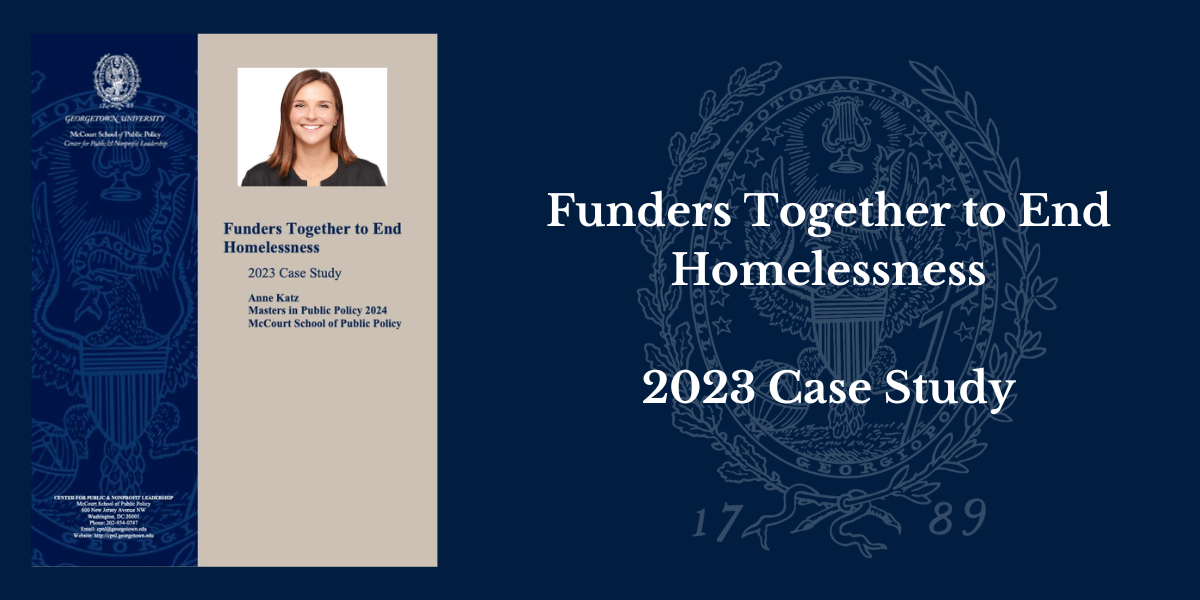Case Study: Funders Together to End Homelessness

Posted in News Story
During the 2022-2023 academic year, the Center for Public and Nonprofit Leadership provided opportunities for McCourt School graduate students to join the Center and conduct independent research. As a Pablo Eisenberg Public Interest Research Fellow, Annie Katz wrote a case study on Funders Together to End Homelessness, a philanthropy network that aims to end homelessness in the United States.
Founded in 2004, Funders Together’s broad network includes private and public funders, community trusts, and nonprofits that fund, operate, or provide services to people experiencing homelessness. During her research, Annie found that Funders Together surpasses conventional practices by creating inventive approaches to support philanthropy in tackling homelessness. The network’s model not only educates, but also urges funders to address the underlying causes of homelessness, such as systemic racism. This is particularly seen in the organization’s approach to their 2022 Strategic Framework, which builds upon their earlier Commitment to Racial Equity established in 2019.
Core elements of the network’s model includes their North Star Coordinates and Strategic Pathways, which outline Funders Together’s values and purpose, while serving as guiding principles for decision-making as the organization evolves.
By conducting interviews with Funders Together’s leadership and members, Annie saw the network’s success in coalescing a consistent approach towards a theory of change in its field. Vanessa Samuelson, Director of Learning and Reporting from the McGregor Fund, particularly values the network’s well-defined vision. “They’re very clear that there are specific approaches that you should take, and that philanthropy has a role to play. It’s really powerful to be connected to those who share the same ambition [about ending homelessness] and are trying to figure it out as you go along.”
Annie’s research revealed that Funders Together encounters similar challenges and limitations in advancing racial equity as many other philanthropic and advocacy organizations. One such challenge the organization faced is the difficulty in transforming deeply rooted practices and systems within foundations. Additionally, some funder members have limited capacity to effectuate change. Despite these obstacles, Stephanie Chen, the network’s Chief Strategy Officer, remains optimistic. “We’re trying to change how the folks who come to our programming show up within their institutions, in hopes that they’ll also change their own institutions,” she said. “Sometimes, there are institutional constraints on what people are and aren’t allowed to fund, but if we can at least help folks understand what the larger system looks like and how they can partner with other funders who can do the things they can’t, then that’s progress to us.”
This case study on Funders Together may be useful in providing a model for philanthropy serving organizations and funders that wish to advance equity and deepen justice in their work.
Read the entire case study here.
